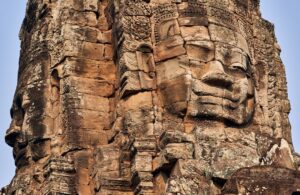The Sungas emerged as a significant power in ancient India following the decline of the Mauryan Empire around the 2nd century BCE. Their rise can be traced back to the aftermath of the assassination of Emperor Ashoka’s grandson, Brihadratha, who was killed by his general, Pushyamitra Sunga. This pivotal moment marked the transition from Mauryan rule to the establishment of the Sunga dynasty, which was characterized by a strong military and a commitment to restoring Brahmanical traditions that had waned during the Mauryan period.
Pushyamitra Sunga, the founder of the dynasty, is often depicted as a staunch supporter of Hinduism, and his reign is noted for its efforts to revive Vedic rituals and practices that had been overshadowed by the more cosmopolitan and inclusive policies of the Mauryas. Under Pushyamitra’s leadership, the Sungas expanded their territory significantly, consolidating power in northern India. They faced various challenges, including resistance from local rulers and foreign invasions, particularly from the Indo-Greeks.
However, Pushyamitra’s military prowess allowed him to repel these threats and establish a stable regime. The Sunga dynasty is also credited with fostering a cultural renaissance, as it became a patron of arts and literature. The period saw the flourishing of Sanskrit literature and the construction of significant architectural works, including stupas and temples that reflected the religious fervor of the time.
The Sunga rule lasted for about a century, during which they maintained a delicate balance between military might and cultural patronage.
Key Takeaways
- Sungas rose to power after the decline of the Mauryan Empire and ruled over a large part of North India, contributing to the political and cultural landscape of the region.
- Kanvas made significant contributions to Indian history through their patronage of art, literature, and architecture, leaving a lasting impact on the cultural heritage of India.
- Satavahanas emerged as a powerful dynasty in South India, establishing their rule and making significant political and cultural contributions to the region.
- The Sungas, Kanvas, and Satavahanas had a profound political and cultural impact on India, shaping the socio-economic and religious landscape of the subcontinent.
- The post-Mauryan dynasties, including the Sungas, Kanvas, and Satavahanas, achieved economic prosperity and established trade relations with other regions, contributing to the growth of commerce and industry in India.
Kanvas: Their Contribution to Indian History
Following the decline of the Sungas, the Kanva dynasty rose to prominence in the 1st century BCE. Founded by Vasudeva Kanva, this dynasty took control after overthrowing the last Sunga ruler, Devabhuti. The Kanvas are often viewed as a transitional power between the Sungas and the subsequent rise of regional kingdoms in India.
Although their reign was relatively short-lived, lasting only about 45 years, they played a crucial role in shaping the political landscape of ancient India during this period.
They continued the Sunga tradition of patronizing scholars and artists, which led to further developments in Sanskrit literature.
The period saw the emergence of notable works that contributed to Indian cultural heritage. Additionally, the Kanvas maintained diplomatic relations with various neighboring states, which facilitated trade and cultural exchanges. Their rule is characterized by a focus on administrative efficiency and stability, which helped to consolidate power in central India.
Satavahanas: A Powerful Dynasty in South India

The Satavahanas emerged as one of the most influential dynasties in South India around the 1st century BCE, contemporaneous with both the Sungas and Kanvas. They are often regarded as one of the earliest significant powers in southern India, with their capital at Pratishthana (modern-day Paithan). The Satavahanas are known for their extensive territorial expansion, which included parts of present-day Maharashtra, Andhra Pradesh, and Madhya Pradesh.
Their rise to power is attributed to their strategic military campaigns and effective administration that allowed them to control trade routes and resources. One of the most notable rulers of the Satavahana dynasty was Gautamiputra Satakarni, who is often celebrated for his military conquests and efforts to consolidate power across southern India. His reign marked a high point for the dynasty, as he successfully defeated rival kingdoms and expanded Satavahana influence into western India.
The Satavahanas were also instrumental in promoting Buddhism and Jainism during their rule, establishing numerous stupas and monasteries that became centers of learning and pilgrimage. The famous Ajanta Caves, adorned with exquisite rock-cut sculptures and paintings, are a testament to their patronage of art and religion.
Political and Cultural Impact of Sungas, Kanvas, and Satavahanas
The political landscape of ancient India was significantly shaped by the interactions among the Sungas, Kanvas, and Satavahanas. Each dynasty contributed uniquely to the evolution of governance, culture, and religious practices in their respective regions. The Sungas’ revival of Brahmanical traditions laid a foundation for Hinduism’s resurgence after the Mauryan era.
Their emphasis on Vedic rituals not only reinforced social hierarchies but also fostered a sense of identity among various communities within their realm. In contrast, the Kanvas played a more stabilizing role during a time of transition. Their governance style emphasized administrative efficiency and cultural continuity, which helped maintain order in a period marked by political fragmentation.
The Kanvas’ diplomatic engagements with neighboring states facilitated trade relations that would later benefit emerging powers in South India. Meanwhile, the Satavahanas’ expansion into southern territories introduced new cultural influences and fostered religious pluralism. Their support for Buddhism and Jainism contributed to a rich tapestry of spiritual thought that would influence Indian society for centuries.
Economic Achievements and Trade Relations of the Post-Mauryan Dynasties
The post-Mauryan period saw significant economic developments driven by the Sungas, Kanvas, and Satavahanas. These dynasties played pivotal roles in enhancing trade networks that connected various regions of India with foreign markets. The Sungas established trade routes that facilitated commerce between northern India and regions such as Central Asia and Southeast Asia.
Their control over key trade centers allowed them to benefit from lucrative exchanges in goods like textiles, spices, and precious metals. The Kanvas continued this trend by promoting trade relations with neighboring kingdoms. Their strategic location enabled them to act as intermediaries between northern and southern India, fostering economic interactions that enriched their coffers.
The Kanvas also encouraged agricultural development through land grants and irrigation projects, which increased productivity and supported population growth. In southern India, the Satavahanas further expanded trade networks by establishing connections with coastal ports along the Arabian Sea and Bay of Bengal. This not only facilitated maritime trade but also allowed for cultural exchanges that enriched local societies.
Decline and Legacy of Sungas, Kanvas, and Satavahanas

The decline of the Sungas began in the 1st century BCE due to internal strife and external pressures from emerging powers like the Indo-Greeks. The last ruler of the Sunga dynasty faced challenges from rival factions that ultimately led to its downfall. Despite their relatively short reign, the legacy of the Sungas endured through their contributions to Hindu culture and religious practices that continued to influence subsequent dynasties.
The Kanva dynasty followed a similar trajectory; their rule ended around 30 BCE due to internal conflicts and invasions from foreign powers such as the Shakas. However, their impact on literature and governance left an indelible mark on Indian history. The Satavahanas experienced a gradual decline due to factors such as economic challenges and invasions from foreign tribes like the Kushans.
Nevertheless, their legacy persisted through their contributions to art, architecture, and religious thought. In summary, while each dynasty faced its own set of challenges leading to its decline, their collective contributions shaped India’s political landscape and cultural heritage during a transformative period in history. The interplay between these dynasties laid foundational elements for future kingdoms that would continue to evolve in response to changing social dynamics and external influences.
If you are interested in exploring the intellectual and philosophical landscape of ancient civilizations, you may find the article on Ancient Greek Philosophy from Yimho to be a fascinating read. This article delves into the ideas and contributions of thinkers such as Thales, Anaximander, Pythagoras, and Heraclitus, shedding light on the rich tapestry of philosophical thought in the ancient world. Just as Sungas, Kanvas, and Satavahanas Post-Maurya were significant in shaping the history of India, these Greek philosophers played a crucial role in shaping the intellectual landscape of their time.
FAQs
What were Sungas, Kanvas, and Satavahanas?
Sungas, Kanvas, and Satavahanas were ancient Indian dynasties that emerged after the decline of the Maurya Empire.
When did the Sungas, Kanvas, and Satavahanas rule?
The Sungas ruled from 185 BCE to 73 BCE, the Kanvas from 73 BCE to 30 BCE, and the Satavahanas from 230 BCE to 220 CE.
What were the major achievements of the Sungas, Kanvas, and Satavahanas?
The Sungas are known for their patronage of Buddhism, the Kanvas for their contribution to Sanskrit literature, and the Satavahanas for their maritime trade and economic prosperity.
How did the Sungas, Kanvas, and Satavahanas contribute to Indian culture and society?
The Sungas, Kanvas, and Satavahanas played a significant role in the development and spread of art, architecture, literature, and religion in ancient India.
What led to the decline of the Sungas, Kanvas, and Satavahanas?
The Sungas were overthrown by the Kanvas, and the Satavahanas faced internal conflicts and invasions from foreign powers, leading to their eventual decline.






















+ There are no comments
Add yours